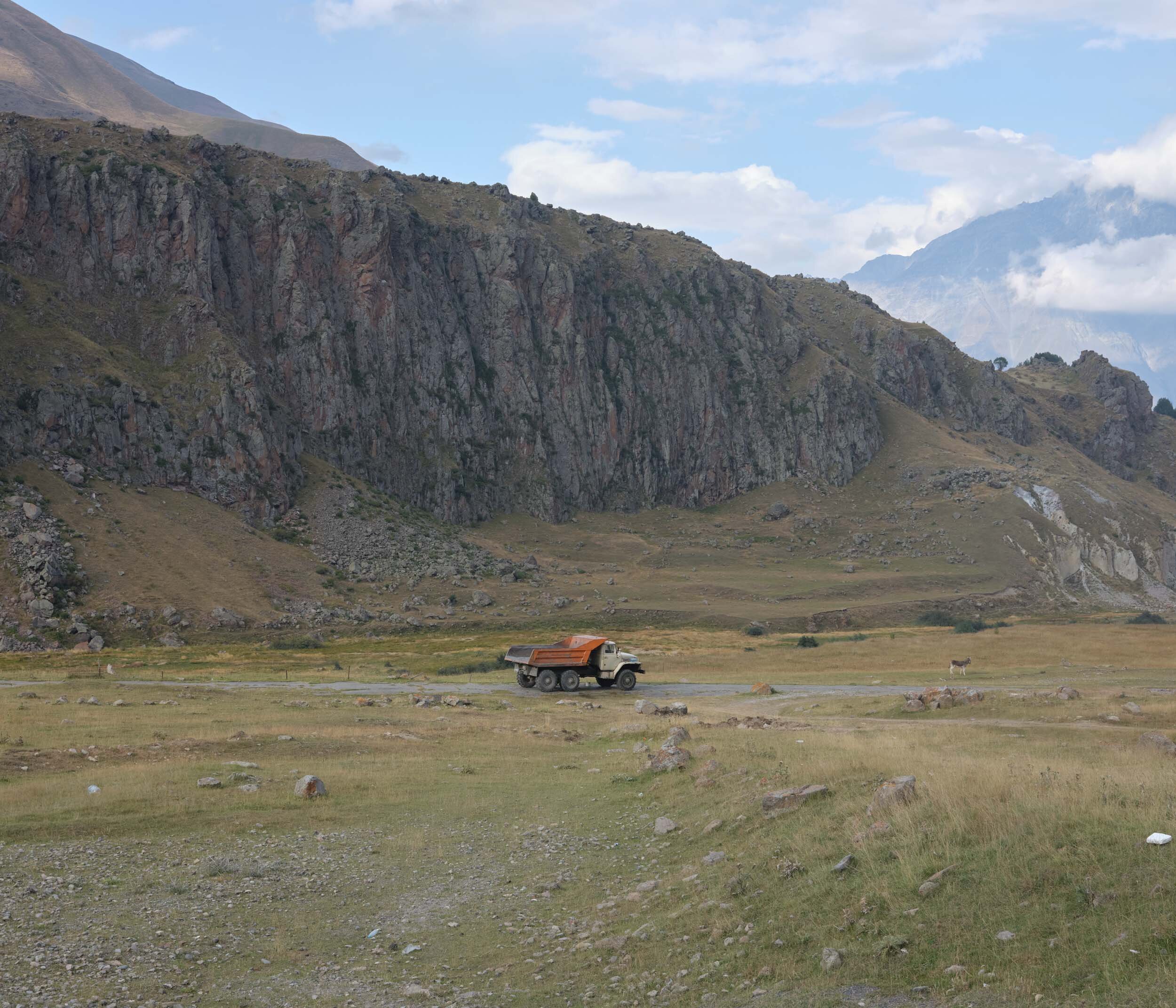The [new] Georgia
September 2019
The mountain range of the Greater Caucasus, with its 5600 mts high peaks, is crossed by the Georgian Military Road which from the Russian border leads to Tbilisi, in a landscape which still inevitably shows marks of the ex-Soviet Union.
The many inhabited centres, submerged in an imposing nature, have a rural and abandoned setting, while only the capital city is beginning to approach western models: two architectural works by Massimiliano Fuksas together with the bridge of peace designed by Michele De Lucchi, contrast with the historic dilapidated houses of the old city and the other neighbourhoods, which should soon be replaced by something new.
The modernist monumental architecture is everywhere, together with the enormous dilapidated buildings of the regime that, despite the extreme conditions of degradation, are still inhabited, while the Georgian wine, with the oldest winemaking method in the world, has managed to create a strongly crossing territory connected tourism. Reaching the wineries in the east of the country means immersing yourself in landscapes with a strong rocky component, just like Vardzia, the invisible city carved into the mountain and re-emerged after an earthquake that caused a part of the rocky ridge to collapse in 1283.
And exactly the rock in the Imereti region gave Georgians huge deposits of manganese, about 60% of world production in 1905. Fifty years later, in 1954, an imposing funicular system brought the miners quarters into communication with mines, effectively creating Georgia's first industrial city. The old cable cars, almost completely abandoned or replaced by more recent ones, try to transform the town, which is mainly dilapidated and suffering from a strong atmospheric pollution due to the, even if just a few, functioning mines.
The same complex and controversial transformation attempts are taking place in the entire Georgian territory, truly suspended between past and future.




































